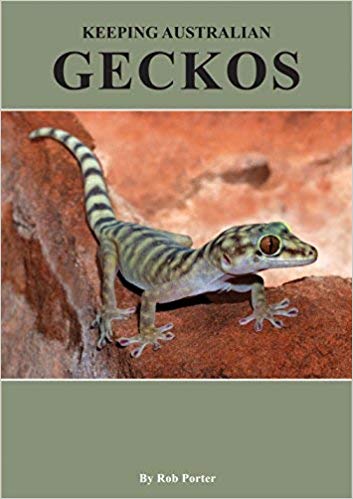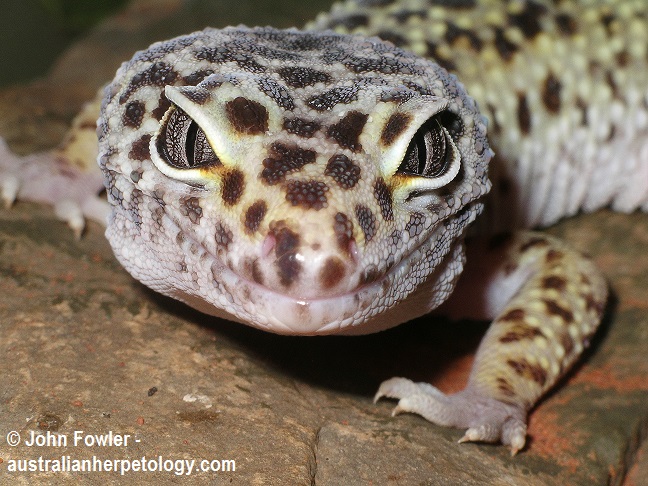AUSTRALIAN HERPETOLOGY WEBSITE

| < RECOMMENDED BOOKS (Affiliate commission earned) >
|

|
Australian Herpetology Website (Reptiles and Amphibians)
Covering Snakes and Lizards, Crocodiles ,Turtles,and Amphibians, including Colubrid snakes, Pythons, Elapids (called Cobras or Coral Snakes in some countries), Sea Snakes, File Snakes, Blind (or Worm) Snakes, Sea Turtles, Freshwater Turtles (or Tortoises) Dragon Lizards (Agamas), Geckos, Legless Lizards Monitor Lizards (often called Goannas in Australia), Skinks and other Reptile species.
PLEASE SHARE THIS PAGE
Techniques in Gecko Feeding
Shortcuts to Australian:- Snakes / Lizards /Turtles /Crocodiles /Amphibians / ........Pythons of the World / Monitors of the World / Sea Turtles of the World / Crocodiles of the World / Boas of the World /
WELCOME TO THE AUSTRALIAN HERPETOLOGY
Page
by
John Fowler & Rachel Barnes
Techniques in Gecko Feeding
If you've never owned a reptile before, then you will probably find the eating habits of a gecko take some getting used to. Geckos, like many other reptiles and amphibians, are insectivores. This means their staple diet consists of insects. Many pet stores that sell geckos will also carry a variety of crickets, mealworms, superworms, silkworms and cockroaches, and all of these are suitable meals for the animal. As a treat, especially for egg-laying and breeding adult females, you may want to provide a pinkie mouse that is only a few days old. Waxworms are also an option, but you should give these to your gecko very infrequently, as they are very fattening and are addictive for geckos. Consider them another rare treat.
Shortcuts to Australian:- Snakes / Lizards /Turtles /Crocodiles /Amphibians / ........Pythons of the World / Monitors of the World / Sea Turtles of the World / Crocodiles of the World / Boas of the World /
WELCOME TO THE AUSTRALIAN HERPETOLOGY
Page
by
John Fowler & Rachel Barnes

The Leopard Gecko is one of the most popular species of geckos kept in the world. Note that it is normally illegal to keep Leopard geckos and other exotic (not native) species of reptiles in Australia, however much of the information about keeping Leopard geckos applies to geckos in general.
The feeding schedule for your gecko will depend on its size. Growing juveniles need more food than adults. Provide food for the babies every single day, and for the adults, feed them every other day. Only give as much food as will be consumed in one feeding, and then remove the leftover insects. How long the feeding lasts depends on the size and appetite of your gecko. Until you learn its habits and preferences, you should observe the animal and remove and dispose of the leftover insects after the gecko has lost interest in them. For a small gecko, start out with four crickets. Larger ones may have as many as eight of them at a feeding.
When you feed the insects to your gecko, be sure to gut load them for a few days beforehand. Gut loading is a term that means you've fed the insects highly nutritious foods. Whatever the insect eats is going to go straight into your gecko, and by giving the insect high-quality food, you are indirectly giving that to your pet. Geckos are what they eat, after all. Most insects will eat just about anything, especially crickets. While you can give them specially prepared, commercial chows, you can also give them fresh fruits, leafy greens and vegetables. It's recommended that you buy vitamin and calcium supplement powders, then dust the insects directly before giving them to your geckos.
When it comes to water, keep a ready supply available at all times. Keep it clean and keep it fresh. Water that is allowed to become stagnant is a breeding ground for bacteria and germs, which can cause illness.
OTHER FEATURED LINKS
Housing Your Leopard Gecko
What to Do When Your Leopard Gecko Gets Sick?
